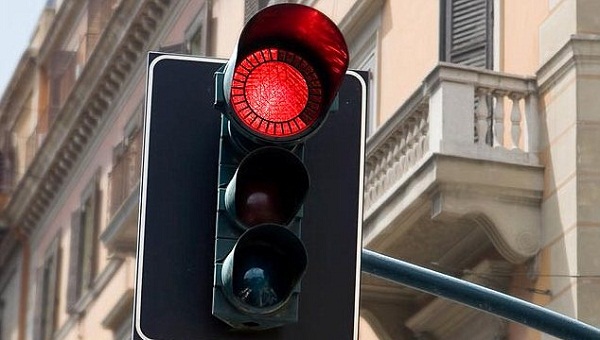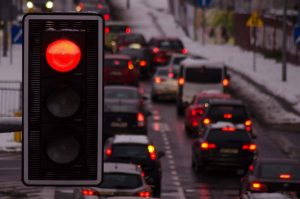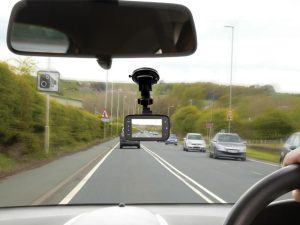Traffic rules are essential for maintaining order and safety on our roads. One frequently encountered rule is the right-turn-on-red. This seemingly simple rule can have significant implications for traffic flow and pedestrian safety. As with many regulations, there can be confusion about its specifics and proper execution. This article will provide a comprehensive overview of the right-turn-on-red rule in Pennsylvania, specifically addressing any updates or changes as of April 2024.
Here in Pennsylvania, the right-turn-on-red rule plays a crucial role in keeping traffic moving, especially in urban areas like Philadelphia and Pittsburgh. However, it’s important to understand the conditions under which this maneuver is legal and safe. This article aims to clarify those conditions and offer guidance for navigating intersections with a right-turn-on-red option.
Current Right-Turn-on-Red Rule in Pennsylvania (as of April 2024)
According to the Pennsylvania Department of Motor Vehicles (DMV) [1], drivers in the state are permitted to turn right on a red light under specific circumstances. Here’s a breakdown of the key points:
- Legal Allowance: Right turns on red are legal in Pennsylvania unless a sign explicitly prohibits them with a “NO TURN ON RED” message.
- Preconditions: Even in the absence of a prohibiting sign, drivers must adhere to the following conditions before making a right turn on red:
- Complete Stop: The vehicle must come to a complete stop before the intersection, at the marked stop line or before entering the crosswalk, whichever comes first.
- No Prohibiting Signs: As mentioned earlier, there should be no “NO TURN ON RED” signs present.
- Yielding the Right-of-Way: Drivers must yield the right-of-way to all pedestrians crossing the street they intend to turn onto, as well as any oncoming traffic that has the green light.
- Clear Visibility: Drivers must ensure a clear view of oncoming traffic and pedestrians in all directions before proceeding with the turn.
- Left Turns on Red: It’s important to note that left turns on red are generally not permitted in Pennsylvania. The only exception applies to situations where a driver is on a one-way street turning left onto another one-way street, and even then, only after coming to a complete stop and yielding the right-of-way.
Sources:
- [1] Pennsylvania Department of Motor Vehicles (DMV): https://www.dmv.pa.gov/Driver-Services/Driver-Licensing/Driver-Manual/Chapter-2/Pages/Signs.aspx
Misconceptions and Cautions
There are some common misconceptions surrounding the right-turn-on-red rule. Here are two key points to remember:
- Right of Way and Pedestrian Safety: Just because you have a green arrow permitting a right turn, pedestrians still have the right-of-way. Always yield to pedestrians crossing the street in the direction you intend to turn.
- Malfunctioning Traffic Signals (“Ride on Red” Law): Pennsylvania has a “Ride on Red” law that allows drivers to proceed cautiously through a red light if the traffic signal detection system malfunctions and the light remains red despite no vehicles being present. However, this law has specific guidelines. Drivers must wait a full red light cycle (usually around two minutes) before cautiously proceeding. They must also come to a complete stop and ensure a clear intersection before entering. It’s crucial not to treat a malfunctioning red light as a stop sign; proceed with extreme caution only if the specific conditions of the “Ride on Red” law are met.
Right-Turn-on-Red in Different Pennsylvania Cities
While the general right-turn-on-red rule applies throughout Pennsylvania, there might be variations in specific intersections within major cities:
Philadelphia
Philadelphia, being the most populous city in Pennsylvania, experiences heavy traffic congestion. Right turns on red are a common sight, especially during rush hour. However, the Philadelphia Department of Streets (DOT) has implemented specific regulations at certain intersections to prioritize pedestrian safety and manage traffic flow.
Here are some things to keep in mind when making right turns on red in Philadelphia:
- Designated Right-Turn Lanes: Many intersections, particularly in the downtown area, have designated right-turn lanes. Drivers in these lanes are permitted to turn right on red after a complete stop, assuming no pedestrians or oncoming traffic are present.
- Red Right Turn Arrows: Some intersections have dedicated red right-turn arrows. These function similarly to a green right-turn arrow, allowing a right turn only after a complete stop and ensuring a clear path.
- School Zones and Pedestrian Crosswalks: Always exercise extra caution in school zones and areas with marked pedestrian crosswalks. Be prepared for a complete stop, even if there’s no red light, to yield to pedestrians and children.
For the latest information on specific intersection regulations in Philadelphia, it’s recommended to consult the Philadelphia Department of Streets website [2].
Source:
- [2] Philadelphia Department of Streets (DOT): https://www.phila.gov/departments/department-of-streets/
Pittsburgh
Pittsburgh, with its hilly terrain and unique road layouts, presents some challenges for drivers. Here’s how the right-turn-on-red rule applies in the Steel City:
- Limited Right Turns on Red: Due to safety concerns and potential blind spots created by the city’s geography, many intersections in Pittsburgh prohibit right turns on red. Always be on the lookout for “NO TURN ON RED” signs, particularly at intersections with significant inclines or declines.
- Right-Turn Lanes with Caution Lights: Some intersections have designated right-turn lanes with flashing yellow yield lights. These lights indicate that a right turn on red might be possible, but drivers must proceed with caution, yielding to pedestrians and oncoming traffic.
For up-to-date information on specific right-turn-on-red regulations in Pittsburgh, refer to the Pennsylvania Department of Transportation (PennDOT) website and search for restrictions in Allegheny County [3].
Source:
- [3] Pennsylvania Department of Transportation (PennDOT): https://www.penndot.pa.gov/
Harrisburg
Harrisburg, the state capital, experiences a moderate traffic flow. Here’s a breakdown of the right-turn-on-red rule in the city:
- Standard Right-Turn-on-Red: Generally, the standard Pennsylvania right-turn-on-red rule applies in Harrisburg. Drivers can turn right on red after a complete stop, assuming no pedestrians or oncoming traffic and no prohibiting signs are present.
- Increased Enforcement in High-Pedestrian Areas: The Pennsylvania State Police, along with Harrisburg city officials, have focused on increased enforcement of pedestrian right-of-way laws around the Capitol complex and other areas with high pedestrian traffic. Drivers should be extra cautious and yield to pedestrians when making right turns on red in these zones.
Benefits and Concerns of Right Turns on Red
The right-turn-on-red rule can offer several advantages:
- Traffic Flow: By allowing right turns on red when safe, traffic congestion can be reduced, especially during peak hours.
- Fuel Efficiency: Less idling at red lights can contribute to improved fuel efficiency for vehicles.
However, there are also safety concerns associated with right turns on Red:
- Pedestrian Safety: Right turns on red can increase the risk of accidents involving pedestrians crossing the street the driver intends to turn onto.
- Increased Crashes: Studies have shown a potential correlation between increased right turns on red and a rise in certain types of intersection crashes.
Conclusion
Understanding the right-turn-on-red rule in Pennsylvania is essential for safe and responsible driving. Always prioritize pedestrian safety, yield the right-of-way, and come to a complete stop before turning. Be aware of potential variations in specific intersections, especially in major cities like Philadelphia and Pittsburgh. Remember, the goal is to keep traffic flowing smoothly while ensuring the safety of everyone on the road.



